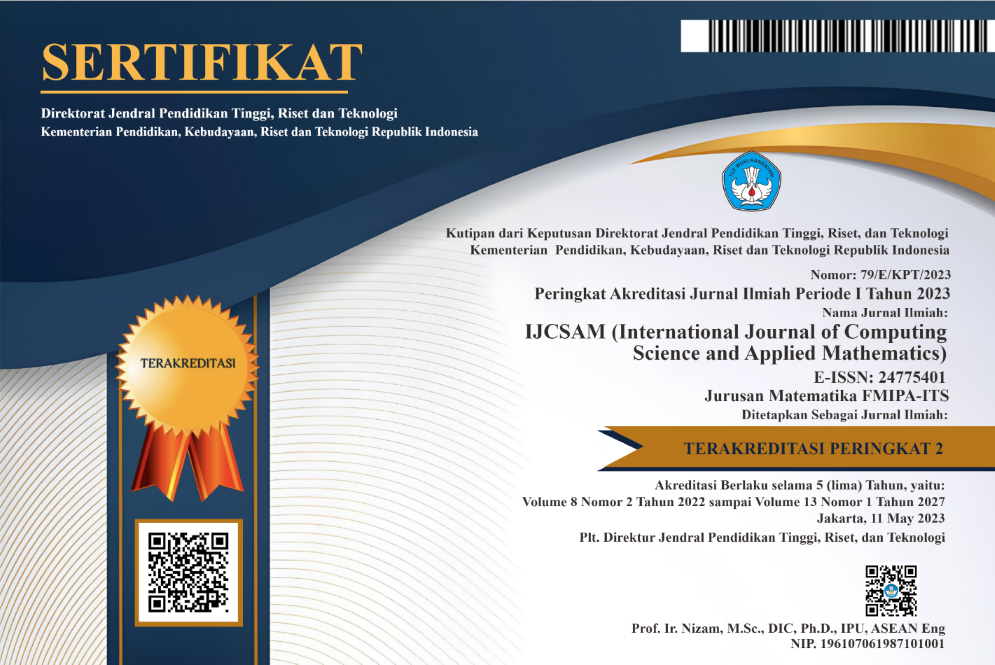Empowering New Capital Zones: East Kalimantan’s Economic District Outlooks Using Location Quotient and Cluster Analysis
Abstract
Keywords
Full Text:
PDFReferences
M. P. P. Nasional and K. Bappenas, “Dampak ekonomi dan skema pembiayaan pemindahan ibu kota negara,” Disampaikan dalam Dialog Nasional II Pemindahan Ibu Kota Negara, Menuju Ibu Kota Masa Depan: Smart, Green and Beautiful, Jakarta, vol. 26, 2019.
R. R. A. Hasibuan and S. Aisa, “Dampak dan resiko perpindahan ibu kota terhadap ekonomi di indonesia,” AT-TAWASSUTH: Jurnal Ekonomi Islam, vol. 5, no. 1, pp. 183–203, 2020.
M. Ariwuni and I. Kartika, “Pengaruh pdrb dan pengeluaran pemerintah terhadap ipm dan tingkat kemiskinan di kabupaten/kota provinsi bali,” E-Jurnal Ekonomi Pembangunan, vol. 8, no. 12, pp. 2807–3114, 2019.
M. Muliza, T. Zulham, and C. Seftarita, “Analisis pengaruh belanja pendidikan, belanja kesehatan, tingkat kemiskinan dan pdrb terhadap ipm di provinsi aceh,” Jurnal Perspektif Ekonomi Darussalam (Darussalam Journal of Economic Perspec, vol. 3, no. 1, pp. 51–69, 2017.
K. R. Jumiyanti, “Analisis location quotient dalam penentuan sector basis dan non basis di kabupaten gorontalo,” Gorontalo Development Review, vol. 1, no. 1, pp. 29–43, 2018.
F. Dong, Y. Wang, L. Zheng, J. Li, and S. Xie, “Can industrial agglomeration promote pollution agglomeration? evidence from china,” Journal of Cleaner Production, vol. 246, p. 118960, 2020.
G. Yin, Z. Lin, X. Jiang, M. Qiu, and J. Sun, “How do the industrial land use intensity and dominant industries guide the urban land use? evidences from 19 industrial land categories in ten cities of china,” Sustainable Cities and Society, vol. 53, p. 101978, 2020.
K. Morrissey, “Producing regional production multipliers for irish marine sector policy: A location quotient approach,” Ocean & coastal management, vol. 91, pp. 58–64, 2014.
ˇ Z. D. Vlaovi´c, B. L. Stepanov, A. S. Anelkovic´, V. M. Rajs, Z. M. Cˇ epic´, and M. A. Tomi´c, “Mapping energy sustainability using the kohonen self-organizing maps-case study,” Journal of Cleaner Production, vol. 412, p. 137351, 2023.
A. Abdulnassar and L. R. Nair, “Performance analysis of kmeans with modified initial centroid selection algorithms and developed kmeans9+model,” Measurement: Sensors, vol. 25, p. 100666, 2023.
G. Niu, Y. Ji, Z. Zhang, W. Wang, J. Chen, and P. Yu, “Clustering analysis of typical scenarios of island power supply system by using cohesive hierarchical clustering based k-means clustering method,” Energy Reports, vol. 7, pp. 250–256, 2021.
W. Zhao, J. Ma, Q. Liu, J. Song, M. Tysklind, C. Liu, D. Wang, Y. Qu, Y. Wu, and F. Wu, “Comparison and application of sofm, fuzzy cmeans and k-means clustering algorithms for natural soil environment regionalization in china,” Environmental Research, vol. 216, p. 114519, 2023.
H. Bedle, C. R. Garneau, and A. Vera-Arroyo, “Clustering energy support beliefs to reveal unique sub-populations using self-organizing maps,” Heliyon, vol. 9, no. 7, 2023.
S. Ayesha, M. K. Hanif, and R. Talib, “Overview and comparative study of dimensionality reduction techniques for high dimensional data,” Information Fusion, vol. 59, pp. 44–58, 2020.
H.-C. Yang, C.-H. Lee, and H.-W. Hsiao, “Incorporating self-organizing map with text mining techniques for text hierarchy generation,” Applied Soft Computing, vol. 34, pp. 251–259, 2015.
N. B. Ahmad, U. F. Alias, N. Mohamad, and N. Yusof, “Principal component analysis and self-organizing map clustering for student browsing behaviour analysis,” Procedia Computer Science, vol. 163, pp. 550–559, 2019.
P. Zeng, F. Sun, Y. Liu, Y. Wang, G. Li, and Y. Che, “Mapping future droughts under global warming across china: A combined multitimescale meteorological drought index and som-kmeans approach,” Weather and Climate Extremes, vol. 31, p. 100304, 2021.
S. B. Billings and E. B. Johnson, “The location quotient as an estimator of industrial concentration,” Regional Science and Urban Economics, vol. 42, no. 4, pp. 642–647, 2012.
R. Z. Cabada, M. L. B. Estrada, and C. A. R. Garc´ıa, “Educa: A web 2.0 authoring tool for developing adaptive and intelligent tutoring systems using a kohonen network,” Expert Systems with Applications, vol. 38, no. 8, pp. 9522–9529, 2011.
A. A. Hameed, B. Karlik, M. S. Salman, and G. Eleyan, “Robust adaptive learning approach to self-organizing maps,” Knowledge-Based Systems, vol. 171, pp. 25–36, 2019.
DOI: http://dx.doi.org/10.12962%2Fj24775401.v10i2.21962
Refbacks
- There are currently no refbacks.
View My Stats

International Journal of Computing Science and Applied Mathematics by Pusat Publikasi Ilmiah LPPM, Institut Teknologi Sepuluh Nopember is licensed under a Creative Commons Attribution-ShareAlike 4.0 International License.
Based on a work at https://iptek.its.ac.id/index.php/ijcsam.






